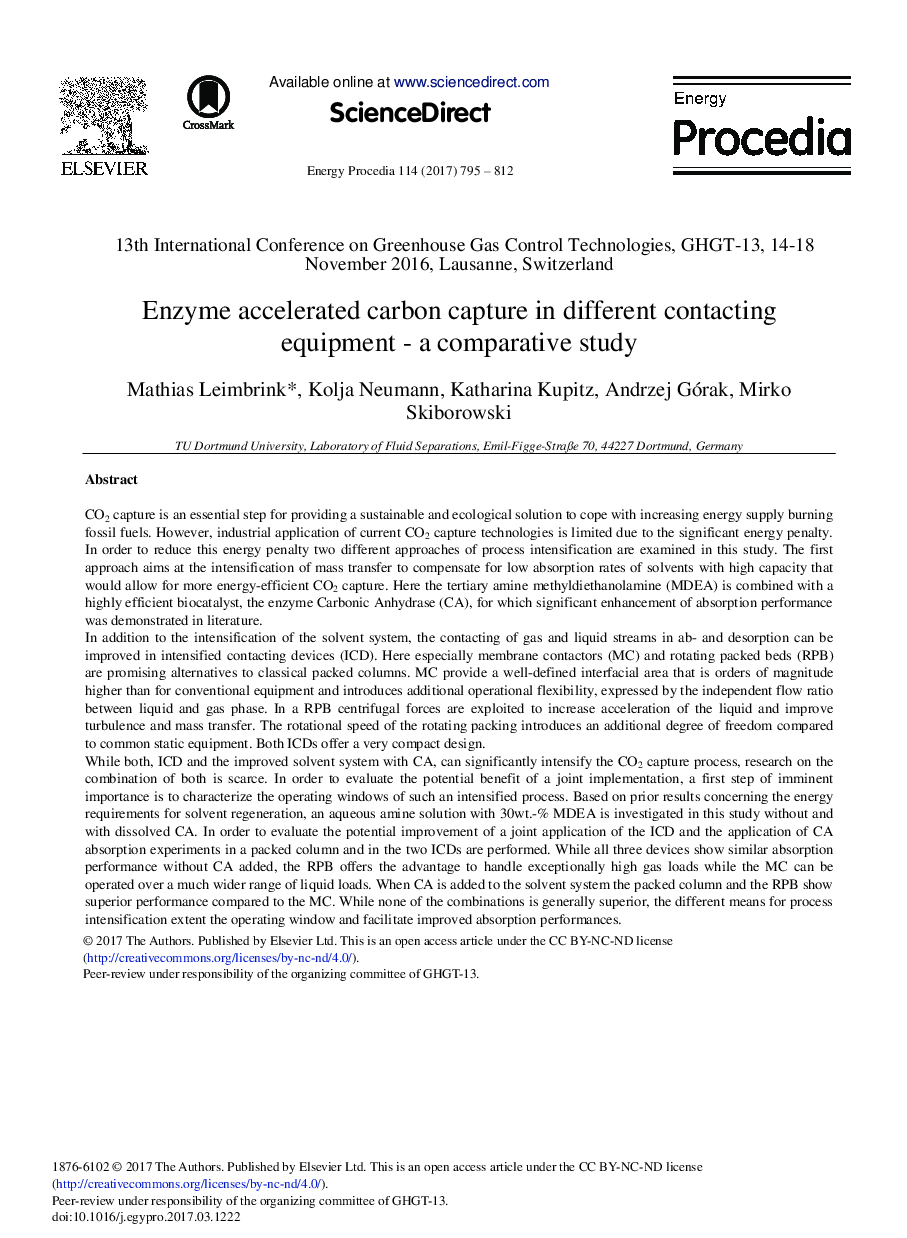| Article ID | Journal | Published Year | Pages | File Type |
|---|---|---|---|---|
| 5445496 | Energy Procedia | 2017 | 18 Pages |
Abstract
While both, ICD and the improved solvent system with CA, can significantly intensify the CO2 capture process, research on the combination of both is scarce. In order to evaluate the potential benefit of a joint implementation, a first step of imminent importance is to characterize the operating windows of such an intensified process. Based on prior results concerning the energy requirements for solvent regeneration, an aqueous amine solution with 30Â wt.-% MDEA is investigated in this study without and with dissolved CA. In order to evaluate the potential improvement of a joint application of the ICD and the application of CA absorption experiments in a packed column and in the two ICDs are performed. While all three devices show similar absorption performance without CA added, the RPB offers the advantage to handle exceptionally high gas loads while the MC can be operated over a much wider range of liquid loads. When CA is added to the solvent system the packed column and the RPB show superior performance compared to the MC. While none of the combinations is generally superior, the different means for process intensification extent the operating window and facilitate improved absorption performances.
Keywords
Related Topics
Physical Sciences and Engineering
Energy
Energy (General)
Authors
Mathias Leimbrink, Kolja Neumann, Katharina Kupitz, Andrzej Górak, Mirko Skiborowski,
